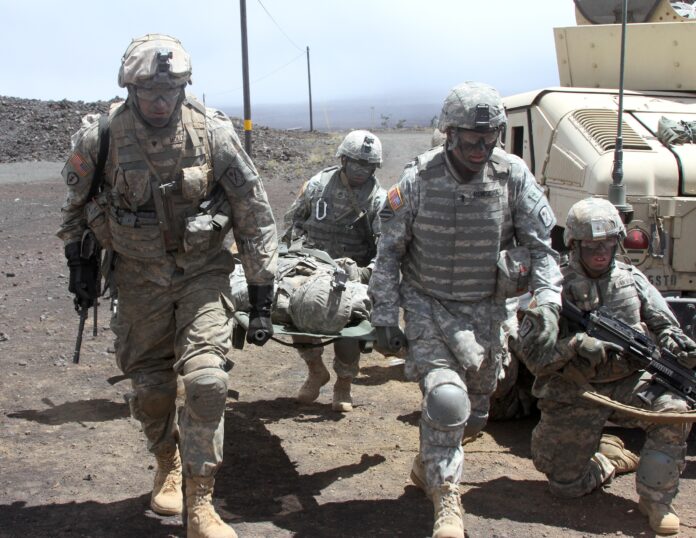Summary
Litter transport is a standard procedure for initial casualty evacuation from the point of injury to the medical aid or pickup zone and is generally done on foot. The process of litter transport consists of either a two- or four-person team carrying a casualty over a long distance or carrying multiple casualties over a short distance. A litter team may transport a single casualty from a remote location, occurring over hours while stopping to provide critical care or protect themselves and the casualty from enemy fire. Litter teams can carry a single patient only a few hundred meters over rough terrain before needing to rest. Mass casualty evacuations may occur following a plane crash or improvised explosive device event. Like transporting standard military loads, such as weapons and equipment, transporting patients using a litter can be physically demanding for Service Members (SMs). During the evacuation, the litter team may be required to provide critical care while actively engaging in combat to protect themselves and the patient. In anticipation of a future fight with near-peer adversaries, improving the physical abilities of an SM and limiting impediments are of high priority. During multi-domain operations (MDO), the anticipated number of casualties along with the anticipated periods and areas of denial by near-peer competitors highlight the criticality and potential demand of effective and efficient dismounted litter transport.
Analysis
Research regarding litter performance and post-carry fatigue is something the military is already interested in. Their finding and approach are both surprising and unexpected. They have found the main concerns with carrying litter are the discomfort of the handles and the weight of the injured. The solution that they have discussed revolves around exoskeletons and whether there is a way for people to wear things that relieve the weight and stress of carrying a litter. It’s interesting to see their initial solution to a problem is to add something to humans, not fix litter. When it comes to analyzing the problem I have always thought about changing the physical litter rather than enhancing the humans carrying them. It’s an interesting way to approach the problem that adds to the questions at hand.




